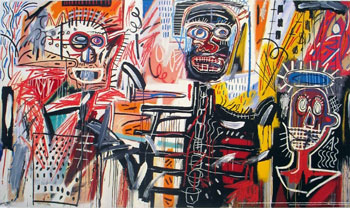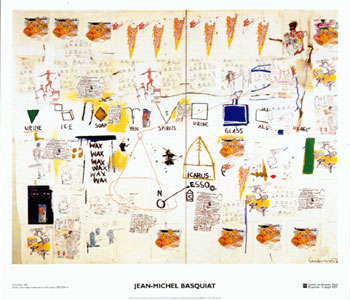
Learn foreign languages while watching your favorite YouTube videos!
The Language learning app is a handy set of tools that will help you improve your language skills by accessing subtitles, a built-in dictionary, and saving words and phrases you want to learn to revise.
Learning foreign languages will be an interesting and exciting experience for you!
Born: 1960
Died: 1988
Gender: Male
Nationality: American


“The only thing the [Eighties’] market liked better than a hot young artist was a dead hot young artist, and it got one in Jean-Michel Basquiat. “Robert Hughes.
Born to upper middle-class parents in Brooklyn, Jean-Michel Basquiat achieved almost instantaneous success with his Graffiti Art in 1980s New York.
With no formal training, Basquiat appropriated signs and symbols from a wide variety of cultural sources, from the art of African bushmen to quotations from Leonardo or Gray’s Anatomy. He then positioned these in an urban context by using the bright colours and scribblings generally associated with the spray can vandalism commonplace in New York City at the time, particularly on the subway system.
Recognisable through his brash and bold imagery, Basquiat quickly established a reputation as an artist who could not be ignored. Along with Keith Haring who also suffered an abrupt end to his career, the two artists set the increasingly decadent New
York art scene ablaze. With paintings such as ‘Hollywood Africans’ (1983) and ‘Worthy Consultants’ (1986), Basquiat seemed to be challenging the art world bourgeoisie through his use of African American iconography communicated through the rough-and-ready style, inspired by his predecessors Cy Twombly and Jean Duboffet, that was rarely seen inside prestigious art galleries. Embracing the riches that he reaped through the sale of his work, however, it seemed as though Basquiat wanted to be both inside and outside of the art world at the same time.
During his brief career, tragically cut short by a drugs overdose, Basquiat had been described in some quarters as an ‘urban noble savage’, yet this clearly belied his privileged background. Edward Lucie-Smith described his work as possessing “immense energy and a vast range of cultural reference,” while other critics were wholly dismissive of the entire Graffiti Art movement.